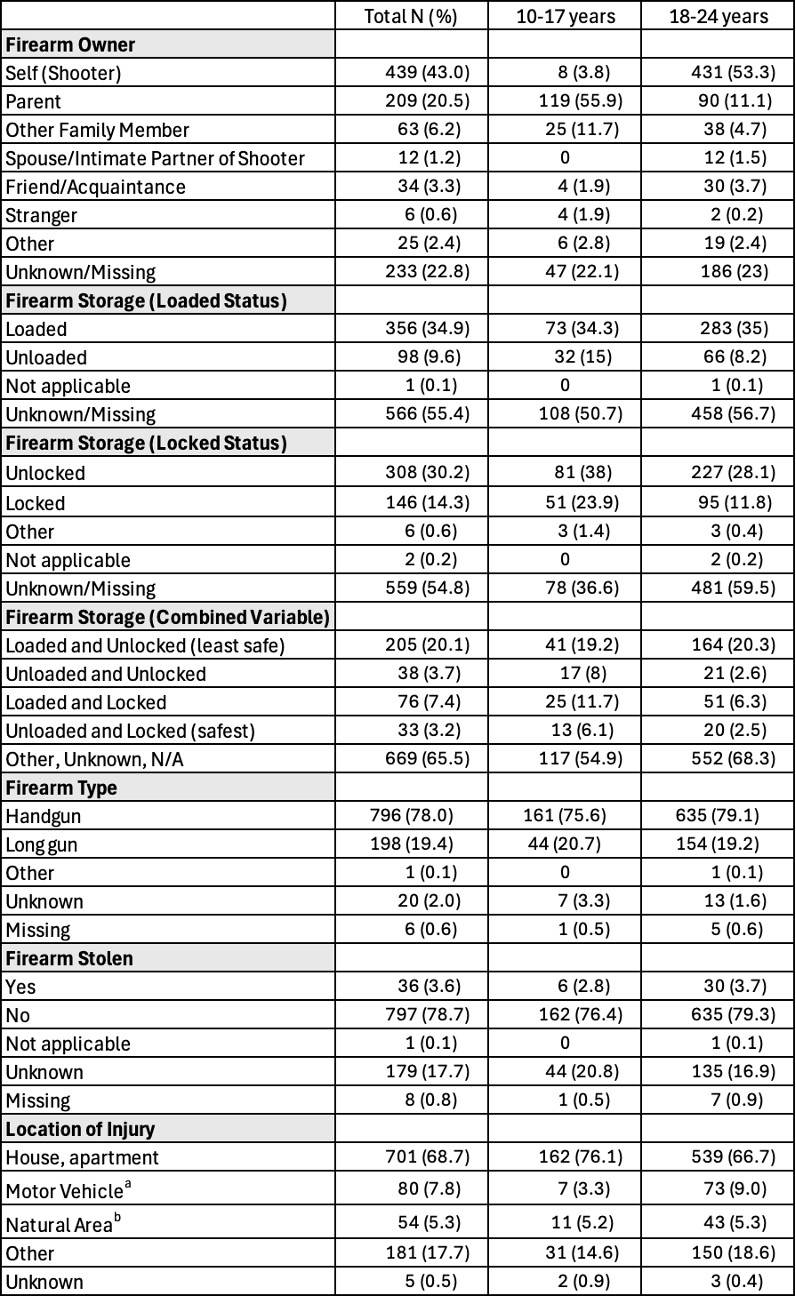Injury Prevention 2
Session: Injury Prevention 2
424 - Who are the Firearm Owners in Youth Firearm Suicide?
Sunday, April 27, 2025
8:30am - 10:45am HST
Publication Number: 424.7042
Sofia Chaudhary, Emory University School of Medicine, Decatur, GA, United States; Mark Zamani, Children's Hospital Association, Washington, DC, United States; Christian D.. Pulcini, The University of Vermont Children's Hospital, Shelburne, VT, United States; Elizabeth Alpern, Ann & Robert H. Lurie Children's Hospital of Chicago, Chicago, IL, United States; peter F. ehrlich, University of Michigan Medical School, Ann Arbor, MI, United States; Joel Fein, Children's Hospital of Phila, Media, PA, United States; Monika Goyal, Children's National Health System, Washington, DC, United States; Matthew Hall, Children's Hospital Association, Lenexa, KS, United States; Stephen W. Hargarten, Medical College of Wisconsin - Milwaukee, WI, Shorewood, WI, United States; Rachel K.. Myers, Children's Hospital of Philadelphia, Philadelphia, PA, United States; Karen Sheehan, Ann & Robert H. Lurie Children's Hospital of Chicago, Chicago, IL, United States; Bonnie Zima, UCLA, LOS ANGELES, CA, United States; Jennifer Hoffmann, Northwestern University, Ann & Robert H. Lurie Children's Hospital of Chicago, Chicago, IL, United States; Eric W. Fleegler, MassGeneral Hospital for Children, Needham, MA, United States
- SC
Sofia Chaudhary, MD (she/her/hers)
Assistant Professor in Pediatrics and Emergency Medicine
Emory University School of Medicine
Decatur, Georgia, United States
Presenting Author(s)
Background: Firearms are the most common lethal means of suicide for youth ages 10-24 years. Understanding the ownership and storage patterns of these firearms is crucial to inform suicide prevention efforts.
Objective: To describe ownership and storage patterns of firearms used in youth suicide, and to examine sociodemographic and clinical characteristics of decedents associated with firearm ownership by the decedent or parent.
Design/Methods: A retrospective cohort study of firearm suicides by youth aged 10-24 years from 2018-2021 using the CDC National Violent Death Reporting System. We included data from nine states (AZ, CT, DE, KS, ME, MT, NH, ND, and HI) with firearm ownership information available for >70% of cases. Multivariable logistic regression models estimated odds of firearm ownership by the decedent or parent, adjusted for age group, sex, race, ethnicity, location, and clinical characteristics.
Results: Of 1,021 youth firearm suicide decedents, most were White (82%), non-Hispanic (80%), ages 20-24 years (63%), and male (89%), with 69% of deaths occurring in a house/apartment. Firearm ownership was missing for 23% of decedents. Of the remaining cases, firearms were most often owned by the decedent (43%) or by parents (21%). Younger (10-17-year-olds) decedents were less likely to own the firearm compared to 18-24-year-olds (4% vs. 53%), whereas parents were more likely to own the firearm for younger compared to older decedents (56% vs. 11%) (Table 1). Of decedents with known firearm ownership and mental health problems (n=307), 60% owned their firearm and 25% were owned by a parent. The adjusted odds ratio of firearm ownership by the decedent was 0.03 (95% CI 0.02, 0.07) for 10-17-year-olds compared to 18-24-year-olds. The adjusted odds ratio of parental firearm ownership was 11.3 (95% CI 7.66-16.60) for 10-17-year-olds compared to 18-24-year-olds (Table 2). Among suicides with a known locked status of the firearm (n=462), 67% were stored unlocked and 32% were stored locked. Among suicides with a known loaded status of the firearm (n=455), 78% were stored loaded and 22% were stored unloaded.
Conclusion(s): Forty percent of youth suicide decedents used their own firearm, and over half of 10-17-year-olds used a parent’s firearm. Although storage data are limited, among decedents for whom firearm storage practices were known, most firearms were not securely stored (e.g., locked and unloaded). Suicide prevention strategies should focus on reducing access to firearms owned by youth in addition to caregivers, with particular attention on reducing access to firearms within the home.
Table 1. Firearm Characteristics and Circumstances in Youth Firearm Suicide, Overall and by Age Group (Column %)
 a.Motor vehicle does not include school bus and public transportation; b.Natural area includes field, river, beach, woods
a.Motor vehicle does not include school bus and public transportation; b.Natural area includes field, river, beach, woodsTable 2. Multivariable Regression for Sociodemographic and Clinical Characteristics Associated with Firearm Ownership
.jpg) a.Adjusted for age group, sex, race, ethnicity, location of injury, and clinical characteristics (mental health problem, suicidal ideation, suicide attempt, alcohol abuse problem, and substance abuse problem).
a.Adjusted for age group, sex, race, ethnicity, location of injury, and clinical characteristics (mental health problem, suicidal ideation, suicide attempt, alcohol abuse problem, and substance abuse problem).
